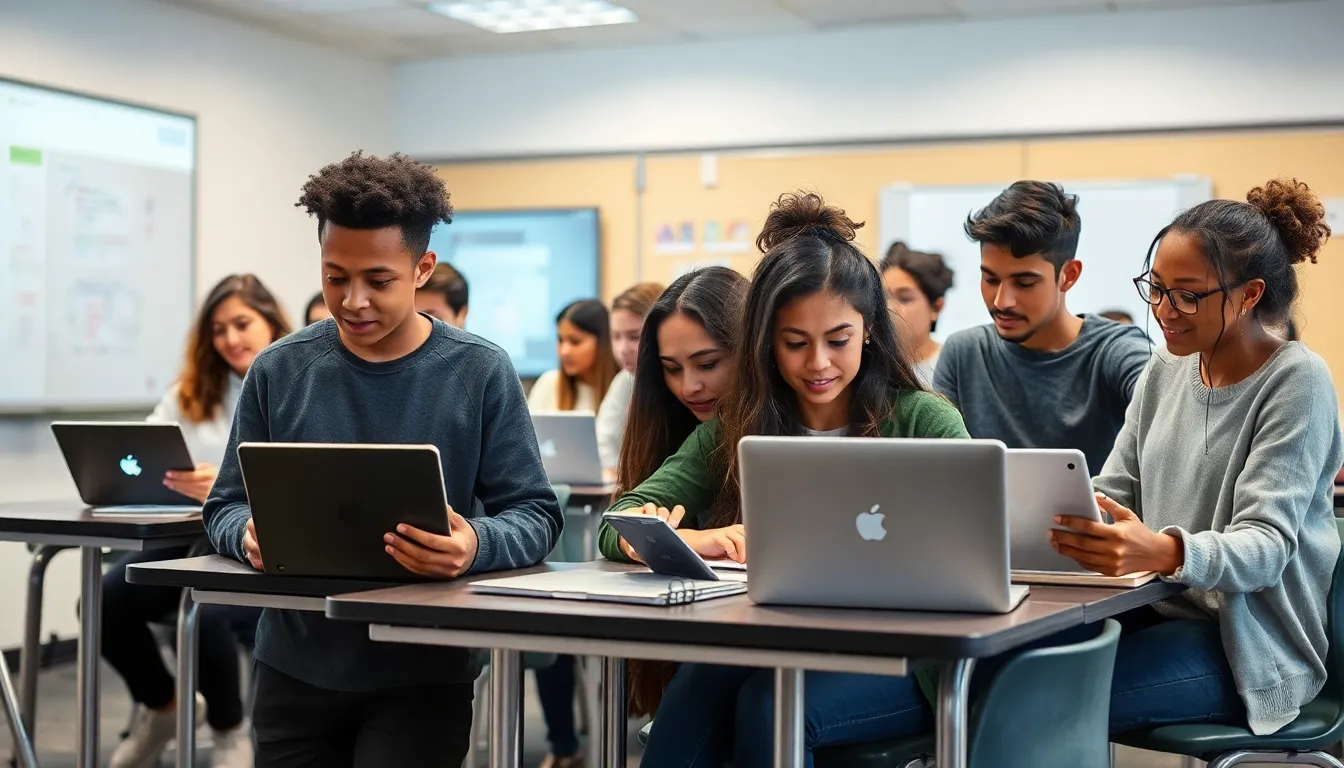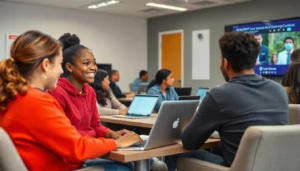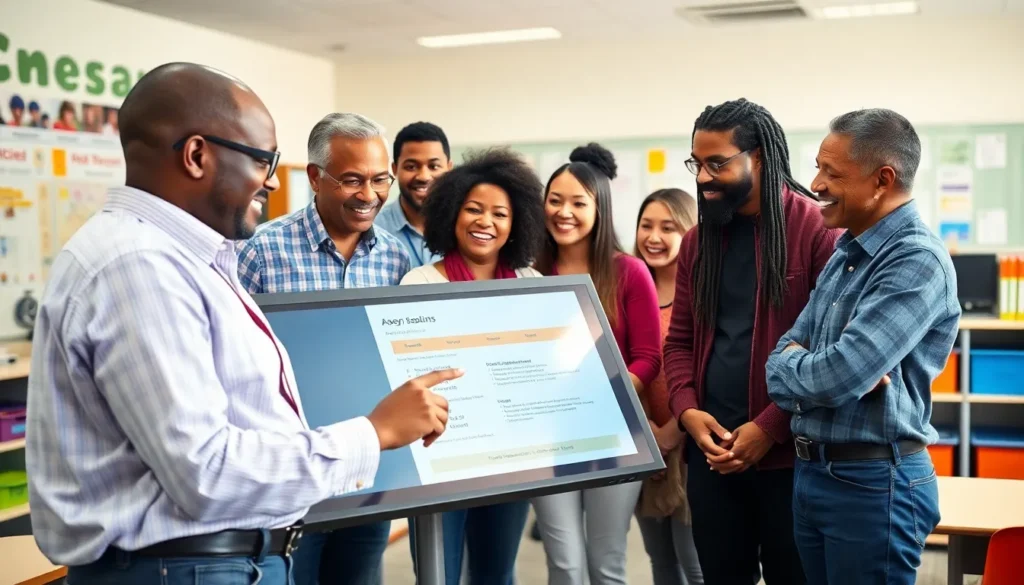Table of Contents
ToggleIn a world where technology evolves faster than a toddler can hit “delete,” learning technology solutions are the superheroes we didn’t know we needed. They swoop in to save the day, transforming mundane training sessions into engaging experiences that stick. Imagine a classroom where students are excited to learn, not just because of the snacks, but because tech makes it fun and interactive.
Overview of Learning Technology Solutions
Learning technology solutions revolutionize education by fostering interactive and engaging experiences. These tools not only enhance traditional training methods but also motivate students to embrace learning.
Definition and Importance
Learning technology solutions encompass software and digital tools designed to facilitate education and training. They play a crucial role in creating personalized learning experiences. Increased engagement results from their ability to adapt to individual learning styles. Enhanced accessibility further supports diverse learner needs, ensuring everyone can participate in educational opportunities. Data shows that the use of these technologies can improve knowledge retention and student motivation significantly.
Types of Learning Technology Solutions
Numerous types of learning technology solutions exist, each serving unique educational purposes. Learning Management Systems (LMS) streamline course delivery and track learner progress. Virtual classrooms enable real-time interaction between instructors and students, regardless of location. Additionally, e-learning authoring tools provide educators with the means to create interactive content. Collaborative platforms foster teamwork and communication among learners. Mobile learning applications allow learners to access resources on the go, making education more flexible and accessible.
Benefits of Learning Technology Solutions

Learning technology solutions provide significant advantages that enhance the educational landscape. They establish pathways for improved engagement, accessibility, and individualized learning.
Enhanced Accessibility
Enhanced accessibility characterizes learning technology solutions. These tools allow students with diverse needs to access materials effortlessly. Multimedia resources cater to different learning styles, accommodating auditory and visual learners. Various formats like videos and interactive quizzes break down barriers, ensuring all students participate fully in their education. Geographic location no longer restricts access; online platforms connect students to resources and instructors from around the globe. This increased reach creates inclusive environments where every learner can thrive.
Personalized Learning Experiences
Personalized learning experiences represent another key benefit of learning technology solutions. These solutions adapt to individual preferences and pacing, allowing students to progress at their own speed. Data-driven insights inform tailored content, ensuring relevance for each learner’s unique journey. With features like adaptive quizzes, students receive immediate feedback, reinforcing knowledge retention. Additionally, learners can choose topics that interest them, fostering motivation and engagement. This flexibility transforms rigid curricula into dynamic, student-centered experiences.
Challenges in Implementing Learning Technology Solutions
Implementing learning technology solutions presents several challenges that can hinder their adoption and effectiveness. Organizations face various obstacles during this transition.
Resistance to Change
Resistance to change stands as a significant barrier. Employees often feel apprehensive about adopting new technologies, primarily due to fear of the unknown. They might prefer familiar traditional methods over innovative solutions. Resistance can arise from concerns about insufficient training, leading to confusion and frustration. Management often needs to address these feelings by promoting a culture of adaptability. Encouraging open discussions about the benefits of learning technologies can help alleviate apprehensions. Providing training opportunities also supports staff in embracing change.
Technical Limitations
Technical limitations frequently complicate the implementation process. Inadequate infrastructure can hinder the smooth integration of new tools. Many institutions may lack the necessary hardware or reliable internet access, impacting the overall effectiveness of learning technologies. Compatibility issues can arise between different software platforms, complicating usability. Additionally, staff may not possess the required technical expertise, delaying implementation. Addressing these challenges through careful planning and resource allocation is crucial for success. Investing in reliable technology infrastructure ensures all users benefit from the intended enhancements.
Future Trends in Learning Technology Solutions
The landscape of learning technology solutions continues to evolve, driven by innovation and evolving educational needs. Emerging trends such as artificial intelligence and adaptive learning technologies transform how learners engage with content.
Artificial Intelligence in Learning
Artificial Intelligence (AI) plays a pivotal role in personalizing learning experiences. Intelligent algorithms analyze learner behaviors and preferences, allowing for tailored content delivery. For instance, chatbots provide real-time assistance, helping students navigate resources efficiently. Moreover, AI-powered analytics identify knowledge gaps, enabling targeted interventions that enhance mastery of subjects. By automating administrative tasks, educators gain more time to focus on teaching, leading to enriched classroom environments.
Adaptive Learning Technologies
Adaptive learning technologies redefine traditional educational experiences by customizing content to individual learning paths. These systems continuously assess learner performance, adjusting the difficulty and pace of materials based on real-time feedback. For example, platforms like Smart Sparrow or DreamBox Learning allow students to progress at their own speed, fostering independence and motivation. These technologies also support diverse learning styles, ensuring inclusive education. As a result, educators can facilitate more profound engagement and improved learning outcomes by leveraging adaptive learning solutions.
Learning technology solutions are reshaping the educational landscape by making learning more engaging and accessible. These innovative tools not only cater to individual learning styles but also foster an inclusive environment where every student can thrive. As technology continues to evolve, the integration of AI and adaptive learning will further enhance personalized educational experiences.
While challenges exist in adopting these solutions, a proactive approach can lead to successful implementation. By embracing change and investing in the right infrastructure, educators can unlock the full potential of learning technology. The future of education is bright, and with the right tools, it can inspire a generation of motivated and skilled learners.










